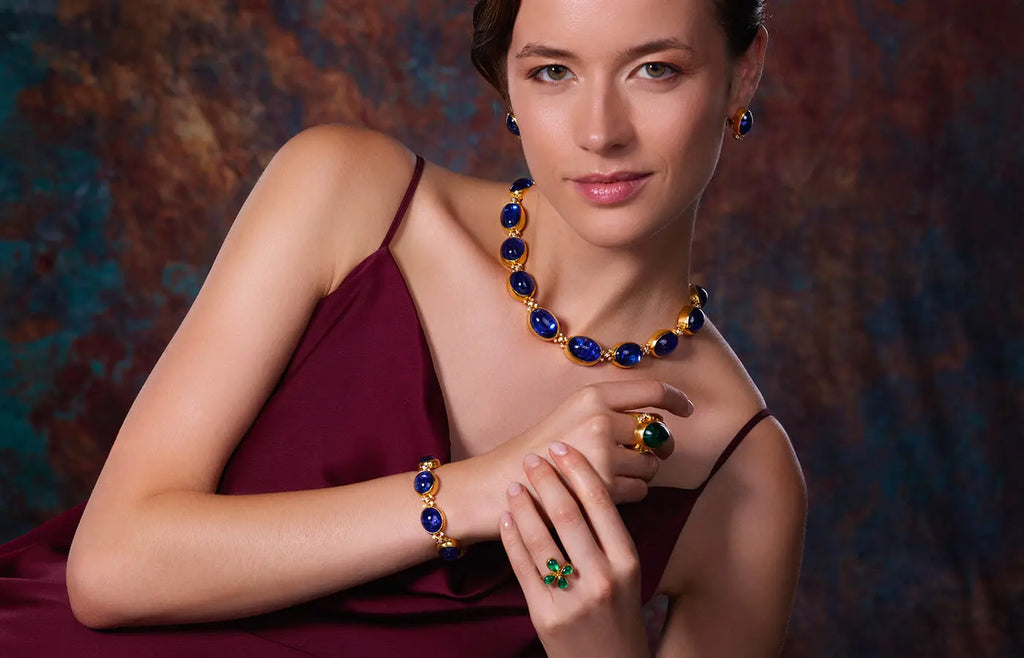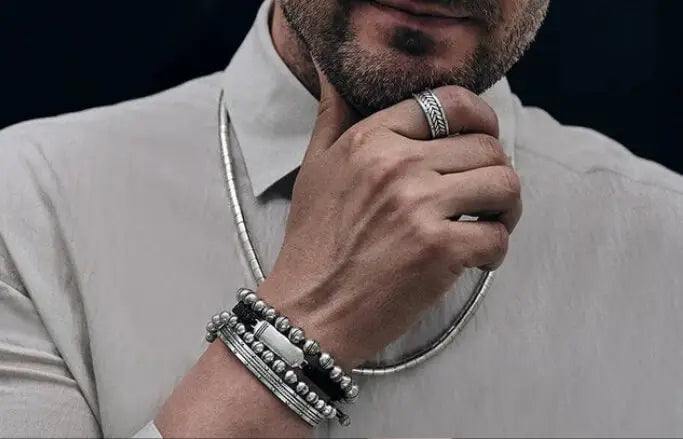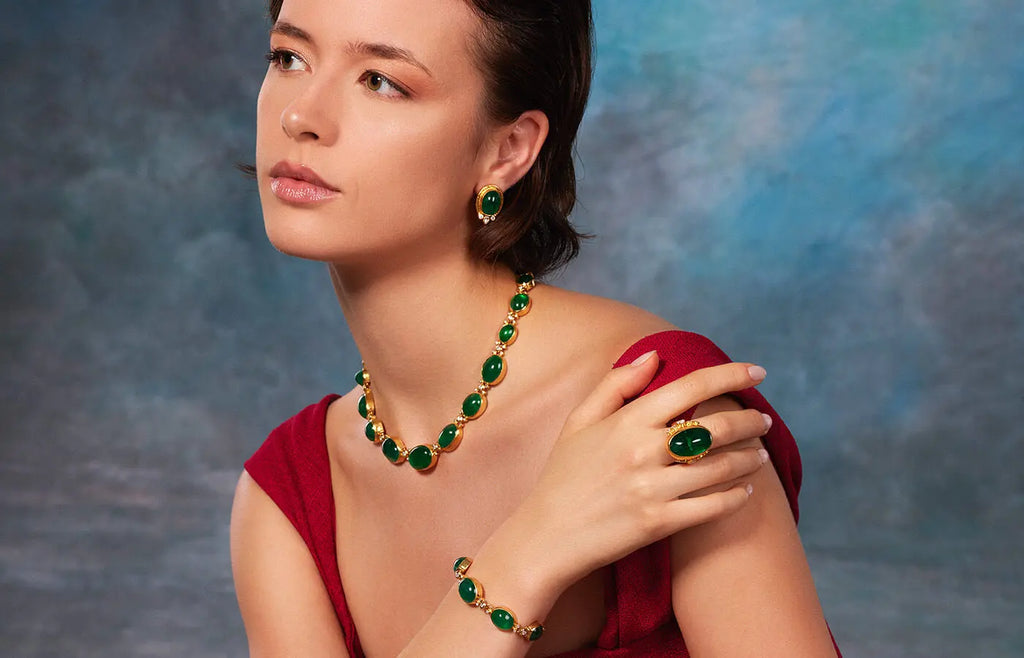If one gemstone can be crowned for its uniqueness, it would be the opal. Revered by many for its bright tones and elegant dance of color, the opal is one of the most sought after gemstones across the globe.

What is Opal?
Typically having a milky base and an iridescent play-of-color across its surface, opal is a hydrated amorphous form of silica. Common opals, which do not have color play range from white, gray, red, orange, yellow, green, blue, pink, olive, brown, and black.
Where Does Opal Mainly Come From?
The first opals can be traced back to 4000 BC where they appear in the works of writers and artists. It is believed that the name opal comes from the Latin word “opalus” meaning to see a change of color. Today, most opals come from Australia with a smaller percentage arriving from Brazil, Mexico and Ethiopia.
What are the Different Characteristics of Opal?
Different types of opals are categorized as having color play or not having color play – also known as common opals.
A color play opal displays a variety of colors when viewed from different angles.
Common opals do not have this property. Instead, they are typically opaque or are a single color.
Color play opals typically have a higher water content than common opals.

What are the Differences Between Australian, Mexican and Ethiopian Opals?
The difference between opals from various regions is usually their color and porosity.
Australian opals can come in a wide variety of colors. They emit magnificent color changes when light hits them. GURHAN’s Rune Gold Cuff Bracelet Featuring Australian Opal and Diamonds and Pointelle Gold Cuff Bracelet, Featuring Australian Opals And Diamonds are two fine examples. Mexican fire opals are usually red and orange. Fire opals get their colors from fine traces of iron oxide. opal-necklaceuses these opals in designs such as his Rune Gold All Around Bracelet, featuring Mexican Opal and Diamond. Ethiopian opals, on the other hand, can have brown, green, orange and yellow hues. GURHAN creates one-of-a-kind pieces like this Round Muse Pendant Necklace featuring an Ethiopian Opal and White Diamonds. Ethiopian opals are more porous than other opals. Read below to learn how to care for them.

What are Doublet and Triplet Opals?
It is beneficial to know why some pieces of jewelry have what is known as doublet opals and triplet opals instead of solid opals.
Even though solid opals are the rarest and most preferred, they are rather expensive and can be hard to source. Jewelry designers therefore have adopted several techniques to offer more affordable options - doublet and triplet opals. An opal doublet is formed by combining a very thin, translucent or transparent opal layer with a dark opal layer. A triplet opal is formed by placing a clear, epoxy-like cap on these two layers. GURHAN uses only quality solid opals not doublet or triplet opals.
What are the Believed Powers of Opals?

Opal is the birthstone for October. They are thought to have a strong connection with intuition and vision. Australian Opals are thought to promote optimism, enthusiasm and creativity while alleviating depression and promoting self-confidence. Mexican Opals are known as love stones, revealing self-confidence, good fortune and success while Ethiopian Opals are thought to promote safety and calmness and encourage honesty. They symbolize hope, luck, innocence, and creativity.
Can Opals be Used in Fine Jewelry?
Opal is more fragile than most gemstones due to its unique formation and presence of significant amounts of water molecules. The hardness level of opal is 5 to 6 on the Mohs scale, still making it suitable for use in jewelry.

How to Care for Opals?
Because of their level of hardness, you should avoid any harsh impacts to your opal. It’s a misbelief that treating your opal with oil will prevent cracking. Instead, store them in a soft fabric bag or when traveling, be sure to keep them in a padded cloth or secure case. Once an opal is cracked or split, it cannot be repaired.
The most important thing to remember when caring for your Ethiopian opals is to keep them away from water and any other liquids. These gems are porous and may absorb water so they must be cared for to protect against color change. Remove your opal ring before swimming, taking a shower or doing dishes. If washing your hands while wearing your opal ring, make sure to thoroughly dry your ring when drying your hands. Likewise, remove your opal earrings if applying hair products or using a heating tool. Should your jewelry get wet, use a microfiber cloth to gently dry the stone and let it air dry fully. Never expedite the process with a hair dryer or heat source as opals can crack if exposed to extreme changes in temperature.
To clean your opal jewelry, use a soft, dry cloth to eliminate buildup of surface dirt from wear. It’s best to wipe the stone every couple of months, and of course, wear it. Natural hydration from consistent wear will ensure the longevity of your opal and keep it radiant for years to come.
GURHAN is renowned for his one-of-a-kind opal designs. Click here to shop the collection.




 GURHAN RUNE GOLD STONE COCKTAIL RING, 19X9MM RECTANGLE ON GRADUATION BAND, WITH OPAL
GURHAN RUNE GOLD STONE COCKTAIL RING, 19X9MM RECTANGLE ON GRADUATION BAND, WITH OPAL GURHAN Elements Gold All Around Necklace, With Ethiopian Opal And Diamond
GURHAN Elements Gold All Around Necklace, With Ethiopian Opal And Diamond GURHAN Rune Gold Double Drop Earrings, Round Post Top, With Opal And Diamond
GURHAN Rune Gold Double Drop Earrings, Round Post Top, With Opal And Diamond GURHAN Pointelle Gold Cuff Bracelet, Clustered Mixed Shapes, With Opal And Diamond
GURHAN Pointelle Gold Cuff Bracelet, Clustered Mixed Shapes, With Opal And Diamond